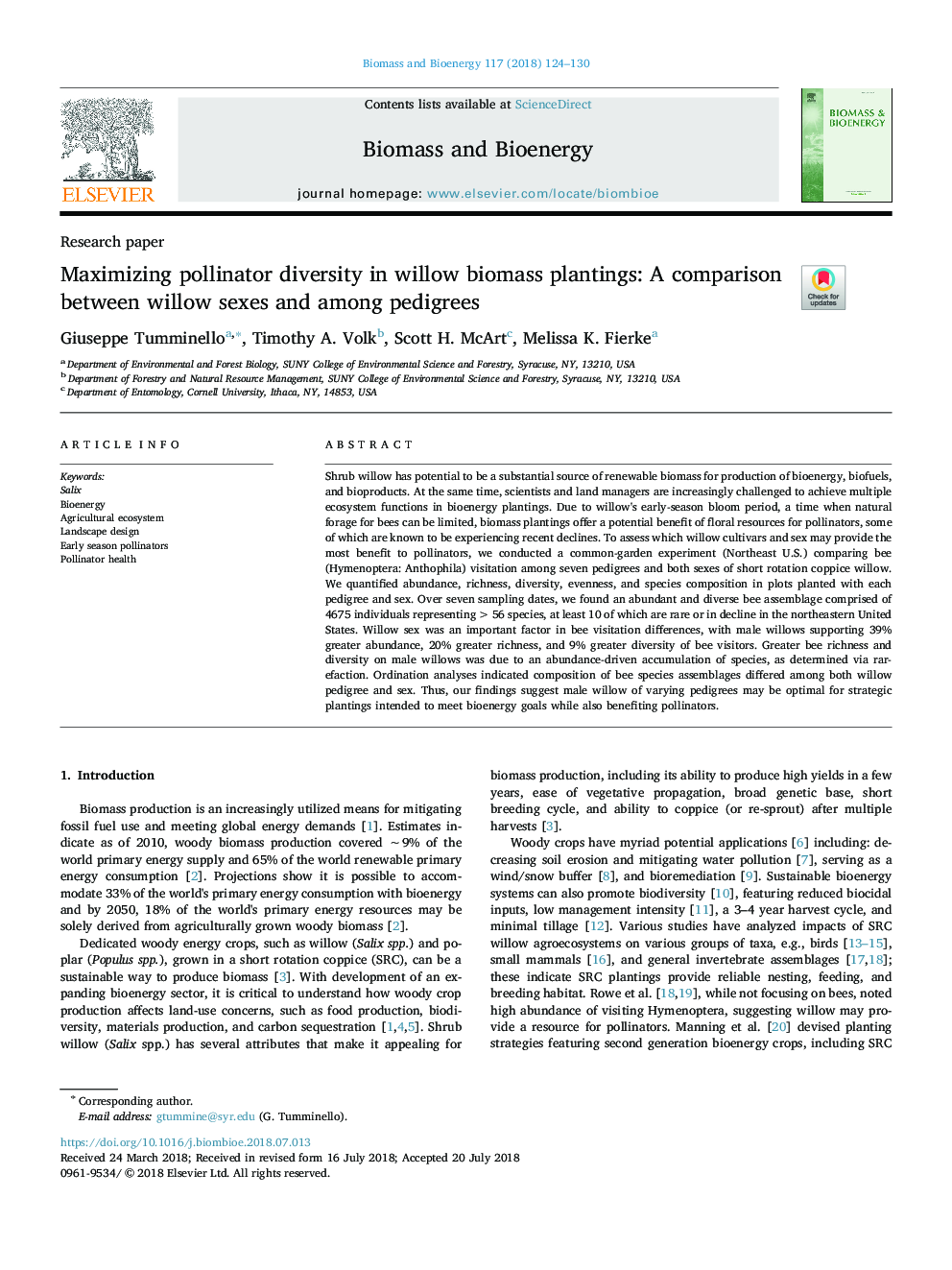| کد مقاله | کد نشریه | سال انتشار | مقاله انگلیسی | نسخه تمام متن |
|---|---|---|---|---|
| 7062803 | 1459776 | 2018 | 7 صفحه PDF | دانلود رایگان |
عنوان انگلیسی مقاله ISI
Maximizing pollinator diversity in willow biomass plantings: A comparison between willow sexes and among pedigrees
ترجمه فارسی عنوان
حداکثر کردن تنوع گرده افشانی در کاشت بیوماس ارایه: مقایسه ای از نژادهای گاو و بین گونه های گیاهی
دانلود مقاله + سفارش ترجمه
دانلود مقاله ISI انگلیسی
رایگان برای ایرانیان
کلمات کلیدی
سالیکس بیو انرژی، اکوسیستم کشاورزی، طراحی منظر، گرده افشان های اولیه فصل، سلامت گرده افشان
موضوعات مرتبط
مهندسی و علوم پایه
مهندسی شیمی
تکنولوژی و شیمی فرآیندی
چکیده انگلیسی
Shrub willow has potential to be a substantial source of renewable biomass for production of bioenergy, biofuels, and bioproducts. At the same time, scientists and land managers are increasingly challenged to achieve multiple ecosystem functions in bioenergy plantings. Due to willow's early-season bloom period, a time when natural forage for bees can be limited, biomass plantings offer a potential benefit of floral resources for pollinators, some of which are known to be experiencing recent declines. To assess which willow cultivars and sex may provide the most benefit to pollinators, we conducted a common-garden experiment (Northeast U.S.) comparing bee (Hymenoptera: Anthophila) visitation among seven pedigrees and both sexes of short rotation coppice willow. We quantified abundance, richness, diversity, evenness, and species composition in plots planted with each pedigree and sex. Over seven sampling dates, we found an abundant and diverse bee assemblage comprised of 4675 individuals representing >56 species, at least 10 of which are rare or in decline in the northeastern United States. Willow sex was an important factor in bee visitation differences, with male willows supporting 39% greater abundance, 20% greater richness, and 9% greater diversity of bee visitors. Greater bee richness and diversity on male willows was due to an abundance-driven accumulation of species, as determined via rarefaction. Ordination analyses indicated composition of bee species assemblages differed among both willow pedigree and sex. Thus, our findings suggest male willow of varying pedigrees may be optimal for strategic plantings intended to meet bioenergy goals while also benefiting pollinators.
ناشر
Database: Elsevier - ScienceDirect (ساینس دایرکت)
Journal: Biomass and Bioenergy - Volume 117, October 2018, Pages 124-130
Journal: Biomass and Bioenergy - Volume 117, October 2018, Pages 124-130
نویسندگان
Giuseppe Tumminello, Timothy A. Volk, Scott H. McArt, Melissa K. Fierke,
